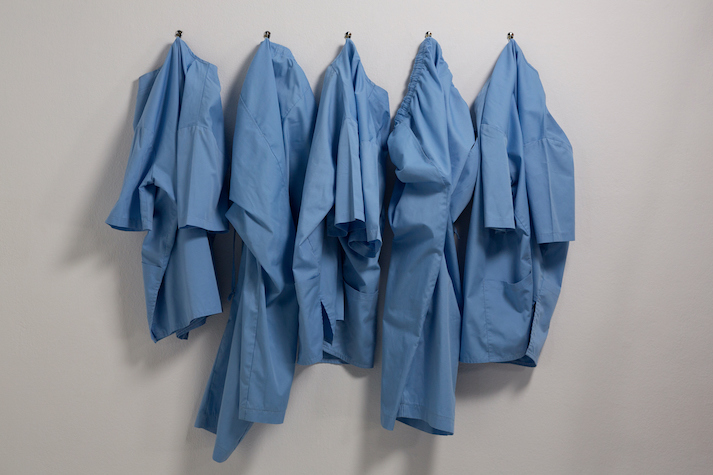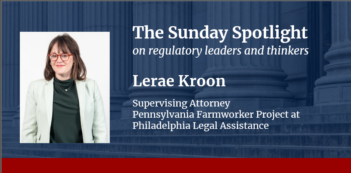
Immigration law exacerbates the growing need for physicians in the United States.
A growing physician shortage in the United States contributes to the country’s 24-day average wait time for patients to see a new doctor. New York and other hard-hit states felt this shortage acutely during the initial COVID-19 surge, and many other states are now starting to experience similar shortfalls in medical staff.
Faced with surging infections across the United States and an aging physician pool, the need to attract new doctors to the profession appears never to have been greater. Yet federal laws restricting the ability of international medical graduates to practice medicine in the United States have needlessly exacerbated the physician shortage.
Doctors who receive their education outside the United States or Canada and pass a rigorous vetting process to practice medicine in the United States make up approximately a quarter of the U.S. physician workforce. These internationally educated doctors have helped to stymie the ever-growing shortage of physicians in the United States—especially in medically underserved communities.
Many internationally educated physicians come to the United States on H-1B visas. Administered by U.S. Citizenship and Immigration Services (USCIS), the H-1B program permits companies to employ foreign workers temporarily in jobs requiring “specialized knowledge.” Physicians on H-1B visas can come to the United States for an initial period of three years and may apply to extend their stay for up to six years, with additional extensions available if the visa holder is waiting for a decision on a visa petition or an adjustment to their immigration status.
A number of regulatory barriers to entry and mobility for physicians on H-1B visas are partly to blame for both nationwide and regional physician shortages in the country—including during the COVID-19 pandemic.
One significant barrier to entry for physicians seeking an H-1B visa stems from the fact that the visa is tied to the job more so than to the worker. It is not enough that a worker is qualified for a specific type of job in the United States—even when there is a severe shortage of workers in that industry. Rather, an employer must be motivated to begin the laborious H-1B visa process and certify that a specific foreign worker is needed to fill a position at their institution.
In addition, the USCIS fee schedule for employer-initiated visa applications combined with the unique pay structure of residents—doctors completing additional years of training after medical school—may discourage hospitals from hiring foreign doctors. Since the federal government funds resident training programs, hospitals pay their residents at uniform rates by specialty and cannot bring in “cheaper foreign labor” by hiring doctors on H-1B visas. Instead, hospitals that hire international physicians for resident training programs pay those physicians at the same rate as their U.S. peers but must also pay USCIS fees to hire them.
Finally, although doctors who have succeeded in obtaining an H-1B visa can file a petition to transfer their visa to another employer, that process can take up to four months—a delay incompatible with fast-changing needs for medical staff amid the pandemic.
Throughout the coronavirus crisis, the Trump Administration has taken actions that have further threatened the supply of physicians in the country.
In March, for example, the U.S. Department of State suspended visa processing worldwide, announcing a categorical exception only for agricultural workers. Facing significant criticism, the Department later softened the suspension, announcing that visa processing for medical professionals would resume. The result of a sustained suspension could have been disastrous, with would-be resident physicians slated to begin their training over the summer being denied entrance to the country.
Then, in October, the U.S. Department of Labor issued an interim final rule that overall curtails the H-1B visa program. The rule adjusts the manner in which prevailing wage levels are calculated to determine that the hiring of an H-1B visa applicant will not negatively impact wages in the country. According to critics of the rule, the new requirements could inflate the wages that must be paid to certain H-1B workers to a degree that will make hiring them cost prohibitive for some U.S. employers.
The Labor Department defended its recent rule by asserting that the H-1B program has been depressing U.S. wages—a concern frequently cited by critics of visa programs but largely inapplicable to internationally trained physicians.
Indeed, the American Medical Association (AMA) submitted a comment urging the Labor Department to exempt physicians from the new rule, which the association predicts will have “destructive consequences for the entire medical field.”
In particular, the association takes issue with requiring H-1B employees to be paid the same wage regardless of their location. Because wage levels will be set based on voluntary employer wage reporting, the AMA predicts that these changes will skew required wage levels upward since most wage reporting comes from higher-paying metropolitan areas. The AMA asserts that, taken together, these changes will render foreign doctors cost prohibitive to hire in rural and medically underserved areas—which, by definition, already struggle to attract medical personnel. For example, the AMA contends that the new rule could force hospitals to pay H-1B residents training in family medicine $208,000 per year, a dramatic increase from the typical family medicine resident salary of $73,000 per year.
The new rule, which took effect immediately, is likely to exacerbate the physician shortage in the United States at a time when the country desperately needs medical professionals, a consequence that does not seem justified by the Labor Department’s purported concerns about protecting physician wages.



